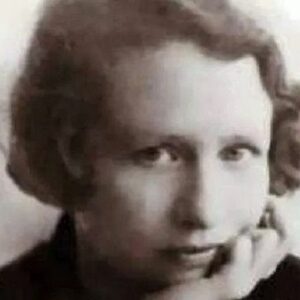Edna St. Vincent Millay was an American poetess and playwright known for her feminist activism as well as her multiple love affairs. ‘Second April,’ ‘Wine from These Grapes,’ and ‘A Few Figs from Thistles’ are only a few of her well-known poetry. She wrote a number of poetry as well as plays such as ‘Aria da Capo.’ Nancy Boyd was the pen name she used for her writing work. She wrote the script for the opera “The King’s Henchman.” ‘Justice Denied in Massachusetts’ was inspired by her arrest as a result of her participation in the Sacco-Vanzetti case protest. She also wrote the poetic drama ‘The Lamp and the Bell,’ a five-act play. The majority of her poetry are about eternal youth. The majority of these depict female uprising and independence. They deal with universal subjects such as love, sadness, death, and life transformation. Brutalities committed by countries like as Spain, Germany, and Japan inspired her pieces ‘Huntersman, What Quarry?’ and ‘The Murder of Lidice.’ She was the first woman to be awarded the Pulitzer Prize for poetry. She was awarded the Frost Medal for her outstanding contribution to American poetry.
Childhood and Adolescence
Henry Tollman Millay, a schoolteacher, and Cora Lounella, a nurse, raised Edna in Rockland, Maine. Norma and Kathleen, her two sisters, were her siblings.
She moved in with her mother and two sisters after her parents divorced in 1904.
She used to write for the school’s literary journal, ‘The Megunticook,’ when she was a student at Camden High School. She received the St. Nicholas Gold Badge for poetry when she was 14 years old.
Her poetry had been published in the prominent children’s magazine ‘St. Nicholas, the Camden Herald’ and the renowned anthology ‘Current Literature’ by the time she was 15 years old.
She entered her poem ‘Renascence’ in a poetry competition in 1912. This great poetry came in fourth place in the competition. She received a scholarship to Vassar College with the support of an education officer from the Young Women’s Christian Association.
She attended Barnard College for one semester to take prerequisite classes. She enrolled at Vassar College in 1913, where she studied literature and languages.
She used to compose poetry and plays for the institution’s magazine, ‘Vassar Miscellany,’ when she was at college. In her play ‘The Princess Marries the Page,’ she even acted. In 1917, she received her diploma. ‘Renascence and Other Poems’ was released the same year.
Career
She moved to New York City after finishing her education and lived in Greenwich Village on a shoestring budget. She performed with the Provincetown Players in this town.
She made a career in New York by publishing many short tales and poetry under the alias Nancy Boyd in ‘Ainslee’s’ magazine. She also appeared in the play ‘The Angel Intrudes’ by communist Floyd Dell.
She directed the Provincetown Players’ production of ‘Aria da Capo,’ a one-act anti-war verse play she penned in 1919.
She authored ‘A Few Pigs From Thistles’ in 1920. Edna’s provocative work is concerned with female sexuality and feminism. In the same year, she began penning poems for the magazine ‘Vanity Fair.’
She spent the years 1920 through 1923 in Europe. Under the pseudonym Nancy Boyd, she used to send sarcastic sketches to Vanity Fair.
When she visited Paris in January 1921, she met sculptor Thelma Wood. She also published two plays and a poetry book named ‘Second April’ in the same year. The elegies in this poetry were composed in memory of a friend who died of influenza in 1918.
‘The Harp-Weaver and Other Poems’ was released in 1923.
She created the script for the opera ‘The King’s Henchman’ in 1925. The script was published and went through four editions, earning her enough money to live comfortably.
She became embroiled in the Sacco-Vanzetti case in 1927 by participating in a protest for which she was arrested. Her arrest prompted her to write and publish the poem “Justice Denied in Massachusetts,” which was published in the “New York Times.”
One of her most famous pieces is ‘The Ballad of the Harp-Weaver,’ released in 1923. The poem describes a poor mom who is unable to provide for her young son’s basic needs. The woman weaves garments for her son while playing her harp in this poem.
Her poem ‘Huntersman, What Quarry?’ was published in 1939 as a protest against the brutalities perpetrated by Fascist Spain, Nazi Germany, and imperialist Japan.
Achievements & Awards
In 1923, she won the Pulitzer Prize for Poetry for her poem “The Ballad of the Harp-Weaver.” A mother’s love for her son is the subject of this poetry.
She received the Frost Medal for her lifelong contribution to American poetry. She was only the second woman to be honored in this way.
Personal History and Legacy
As a bisexual woman, she had multiple relationships with women, including silent cinema actress Edith Wynne Matthison. She was still in school at the time.
She had strong friendships with writers such as Witter Bynner, Arthur Davison Ficke, and Susan Glaspell later in her life. Floyd Dell, an author, and Edmund Wilson, a critic, both proposed to her. However, she turned down both of them.
She met Eugen Jan Boissevain, whom she married in 1923, while she was a student at Vassar College. Boissevain was a feminist who supported her job as well as took care of her domestic responsibilities. They didn’t have any children.
In 1949, her spouse died of lung cancer. Edna got reliant on drink after his death.
After suffering a heart attack, she died at the age of 58.
Estimated Net Worth
The estimated net worth of Edna St. Vincent Millay is unknown.
Trivia
When she was a child, this renowned poetess dreamed of becoming a concert pianist. When her teacher told her that she couldn’t play the piano because her hands were too little, she opted to devote her time to writing.
She became the first woman to win the Pulitzer Prize for Poetry.


